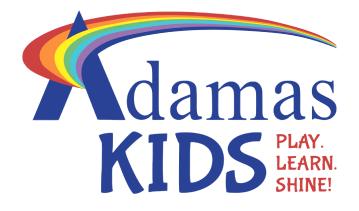Child Safety and Awareness: Essential Steps to Protect Our Children Child safety is a fundamental aspect of parenting that ensures children grow up in a secure and nurturing environment. In a world where potential dangers can arise both online and offline, teaching children safety skills and fostering their awareness is not just beneficial—it’s crucial. By
HOW TO TEACH HANDWRITING TO THE CHILDREN?
FACTS
Handwriting is crucial because recent brain scan studies have shown that early handwriting skill helps kids learn to read. It is a fundamental skill that plays a very crucial role in a child’s educational foundation and their cognitive development. Teaching handwriting tactfully and effectively can help the parents to build confidence in their children, improve fine motor skills, and shine in their academic, as well as extra- curricular journey. Here is a comprehensive guide to help you teach handwriting to children effectively.
Start with Fine Motor Skill Development
Parents should always focus on playful activities and lessons that activates and strengthen the child’s hand muscles and improve coordination. Activities such as:
· Playing with clay mould or playdough.
· Using scissors for cutting paper, parents should always be around the child while using scissors.
· Colouring and drawing with crayons.
· Stringing beads or lacing cards.
These activities can help parents to improve their child’s fine motor skill.
Early, and regular handwriting practice and writing down alphabets, letters, messages and even thoughts help kids break the code.
• Studies show that the sequential finger movements necessary for handwriting can activate the region of the brain involved in thinking, memory, and language.
• In the early childhood setting, the activities many children perform with their hands are prewriting skills designed to improve visual motor function, visual perception (space awareness), hand/eye coordination, and motor control.
Choose the Right Writing Tools
Selection of the proper age-appropriate writing tools that are comfortable for small hands, is a task for all parents. Here are a few suggestions for all the parents to take a well-informed decision.
· Chunky crayons can be used for toddlers.
· Triangular pencils give a better grip.
· Temporary markers and white boards can be used for a regular practice.
Teach Proper Pencil Grip
Demonstrating and encouraging the correct pencil grip from the beginning should be the first step. The tripod grip, where the thumb, index, and middle fingers hold the pencil, is ideal. Use pencil grips if necessary to assist with proper positioning.
Focus on Letter Formation and Practice Consistently
Teach letters in a structured manner. Repetition is key to mastering handwriting. Incorporate daily practice sessions but keep them short to avoid fatigue.
· Start with capital letters as they are simpler in shape
· Use worksheets with directional arrows for proper stroke order
· Break down letters into basic shapes (e.g., circles, lines)
FOR YOUNGER CHILDREN
• Handwriting activates the brain more because it involves more complex motor and cognitive skills.
• Handwriting contributes to reading fluency because it activates visual perception of letters.
• Good handwriting has a positive impact on grades.
• Cursive writing helps students, both young and old, with dyslexia. Children can have a very hard time with writing in print because many of the letters look similar, particularly b and d. Also it can feel very uncomfortable and disjointed writing in print. Cursive writing offers each letter a very different look and allows the pupil to write in a flowing, comfortable way. This can decrease their dyslexic tendencies and make them more confident in their abilities.
Encourage Correct Pencil Grasp
• Encourage the child to hold a pencil/crayon with a tripod grip.The tripod grasp is considered to be the most efficient because it allows the greatest amount of finger movement and thus control over the writing tool; it is the least fatiguing method for the muscles in the arm and hand.
• Do not force them into selecting a particular hand. Forcing children into hand dominance will make learning more difficult for them as they will always have to “translate” what they are writing to the other hand.
• Break crayons /pencil in half. Shorter crayons also encourage that tripod grip.
• Painting with thin paint brushes
• The appropriate arm position is with the wrist and forearm resting on the table (not elevated above it)
Related Posts
Next Story
